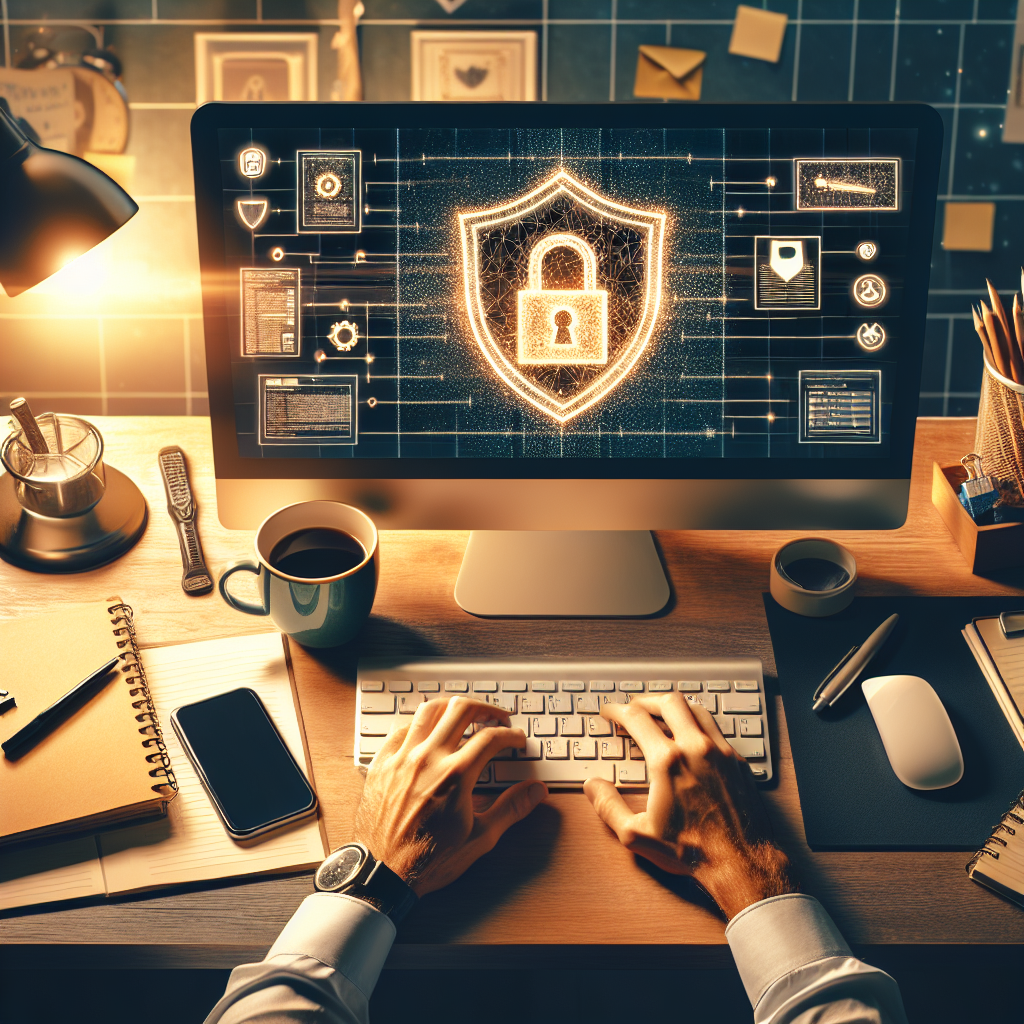The COVID-19 pandemic has transformed the way businesses operate, pushing many organizations to adopt remote work as a permanent strategy. While this shift offers numerous benefits like increased flexibility and access to a wider talent pool, it also raises concerns about cybersecurity. As employees work from home, they can unintentionally expose their organizations to various risks. In this article, we will explore effective strategies for securing remote work environments, ensuring that businesses remain protected against potential cyber threats.
Understanding the Risks of Remote Work
Before diving into protection strategies, it’s crucial to understand the risks associated with remote work. Some of the key vulnerabilities include:
-
Insecure Networks: Employees may connect to public Wi-Fi networks, which are generally less secure than private connections, making it easier for cybercriminals to intercept data.
-
Unsecured Devices: Personal devices might lack the necessary security measures employed in corporate environments, such as up-to-date antivirus software or firewalls.
-
Phishing Attacks: Remote workers are often targets for phishing scams, where attackers impersonate legitimate organizations to steal sensitive information.
-
Data Leakage: Employees might inadvertently share sensitive information through insecure channels, such as personal email accounts or unprotected cloud storage.
- Limited IT Support: In a remote setup, IT teams may struggle to provide immediate support, delaying the resolution of security issues.
Effective Strategies for Securing Remote Work
1. Implement VPNs
A Virtual Private Network (VPN) encrypts data transmitted over the internet, making it difficult for unauthorized users to access sensitive information. Organizations should require employees to use a VPN when accessing company resources and train them on how to connect securely.
2. Use Multi-Factor Authentication (MFA)
MFA adds an extra layer of security by requiring multiple forms of verification before granting access to sensitive information. This reduces the chances of unauthorized access, even if a password is compromised. Organizations should enforce MFA for all critical systems and applications.
3. Maintain Regular Software Updates
Keeping software updated is one of the most effective ways to safeguard against vulnerabilities. Companies should ensure that devices used for remote work have the latest operating systems, applications, and security patches installed. Encourage employees to enable automatic updates whenever possible.
4. Conduct Security Awareness Training
Employees are often the first line of defense against cyber threats. Regular security awareness training sessions can help them recognize signs of phishing attacks, social engineering tactics, and other common scams. A well-informed employee is less likely to fall victim to cyberattacks.
5. Employ Endpoint Security Solutions
Endpoint security solutions protect devices used to access corporate networks. These can include anti-virus software, intrusion detection systems, and endpoint detection and response (EDR) tools. Organizations should mandate the installation of endpoint security solutions on all devices used for work.
6. Limit Access to Sensitive Data
Employ the principle of least privilege, which grants employees access only to the information necessary for their job functions. This minimizes the risk of data breaches and reduces the impact in case of unauthorized access.
7. Utilize Secure File Sharing Solutions
When sharing sensitive information, employees should use secure file-sharing platforms instead of personal email accounts or unprotected cloud storage. It’s essential to choose services with strong encryption and access controls.
8. Monitor Remote Access
Regularly monitor remote access to corporate networks and applications. Implementing security information and event management (SIEM) systems can help track user activities and detect any anomalies that might indicate a security breach.
9. Establish Clear Remote Work Policies
Clearly defined policies on remote work are essential for protecting your organization. These policies should outline acceptable use of devices, data sharing guidelines, and procedures for reporting security incidents. Regularly review and update these policies to adapt to new threats.
10. Create an Incident Response Plan
In the event of a security breach, having a well-documented incident response plan in place ensures that your organization can respond quickly and effectively. This plan should include details on how to contain the breach, communicate with affected parties, and assess damage.
The Role of Leadership in Cybersecurity
Leadership plays a pivotal role in fostering a security-conscious culture within the organization. Executives should advocate for cybersecurity at all levels, allocating necessary resources to implement security measures and conducting regular reviews of policies and practices. Encouraging an open dialogue about cybersecurity concerns can also empower employees to take responsibility for their roles in protecting corporate assets.
Conclusion
Securing remote work is a shared responsibility that requires collaboration among employees, IT teams, and organizational leadership. By implementing robust cybersecurity measures, fostering a culture of security, and providing ongoing training, businesses can mitigate risks and create a safer remote working environment. As remote work becomes a permanent fixture for many organizations, prioritizing cybersecurity will remain crucial for success and sustainability in the digital age.
FAQs
1. What is a VPN, and why do I need one for remote work?
A Virtual Private Network (VPN) encrypts your internet connection, helping protect sensitive data from potential cybercriminals. Using a VPN when accessing company resources ensures that your internet traffic is secure, especially on public networks.
2. How can I recognize phishing emails?
Phishing emails often contain poor grammar, appear to be from unofficial email addresses, or urge you to act quickly. Always verify the sender and avoid clicking on suspicious links.
3. What should I do if I suspect a security breach?
If you think your account or device may have been compromised, disconnect from the internet immediately, change your passwords, and report the incident to your IT department or designated security team.
4. How often should I undergo cybersecurity training?
Organizations should provide security training at least annually, with additional refresher courses as needed to keep employees updated on the latest cybersecurity threats.
5. What tools can help with secure file sharing?
Many tools can facilitate secure file sharing, including services like Google Drive with encryption, Microsoft OneDrive, and Dropbox. Look for features such as access controls and variable permissions to ensure security.
By adopting these proactive strategies, organizations can effectively safeguard their digital assets and maintain a secure remote working environment.


